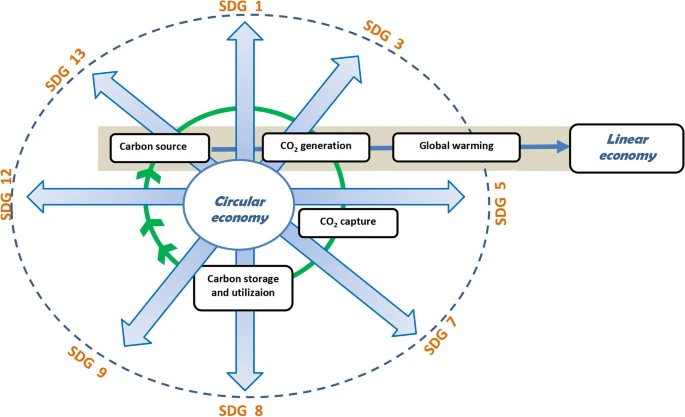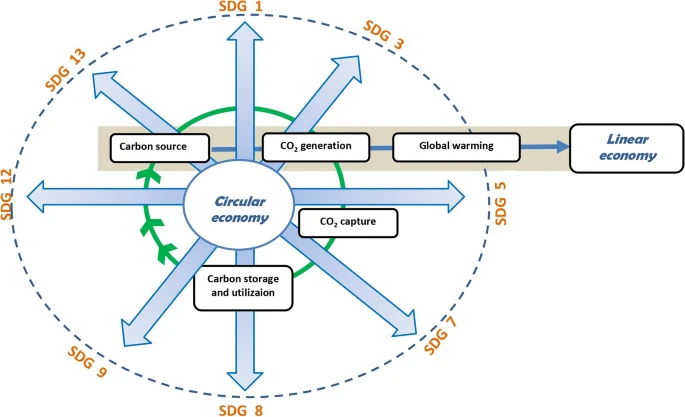
Convergent synergy of carbon capture within the circular economy paradigm: a nexus for realizing multifaceted sustainable development goals
Carbon dioxide emissions from power plants and industrial sources remain a leading driver of global warming, with atmospheric concentrations reaching record highs in recent years. While CCS offers substantial potential for reducing greenhouse gases, its widespread adoption faces challenges, including high costs, technical hurdles, and concerns about long-term environmental impacts.
The circular economy model shifts away from the traditional ‘take, make, dispose’ method of manufacturing toward a system where waste is minimized and resources are reused and recycled. By integrating CCS within this framework, the study highlights how captured carbon dioxide can be transformed into valuable products such as chemicals, construction materials, or even synthetic fuels, facilitating resource efficiency and reducing reliance on fresh raw materials.
“We find that combining CCS with circular economic strategies creates a multiplier effect for sustainability,” said lead author Dr. Pratibha Gautam of SRICT, UPL University of Sustainable Technology in India. “Not only do we reduce emissions, but we also generate economic value, green jobs, and resilience for industries and communities.”
Key findings suggest that CCS can be paired with renewable energy to lower its overall carbon footprint, and the captured CO2 can be used to produce fertilizers, bio-based plastics, and other essential goods. Geological storage, ocean storage, and mineral carbonation are examined as durable solutions for CO2 management, each with its own advantages and challenges. For example, mineral carbonation transforms CO2 into stable solids used in construction, offering permanent sequestration while supporting circular resource flows.
The team emphasizes that policy action, government incentives, and public awareness campaigns are critical for scaling these solutions. Regulatory frameworks and cross-sector collaboration will help overcome barriers and maximize the positive impact on climate targets.
By bridging the gap between technological innovation and sustainable practices, the research provides actionable guidance for policymakers, industry leaders, and communities aiming to chart a path toward a carbon-neutral future. The study underscores that the circular economy, bolstered by carbon capture, can support economic growth, improve public health, and help achieve a suite of United Nations Sustainable Development Goals.

